Posted on: 30 October 2020
This week’s leadership message comes from Dawn Greaves, the Partnership’s Digital Programme Lead, and Roz Davies, Managing Director at mHabitat.
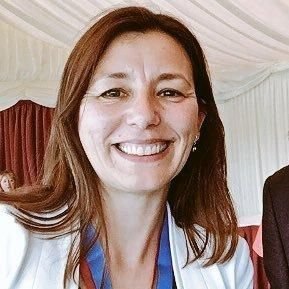
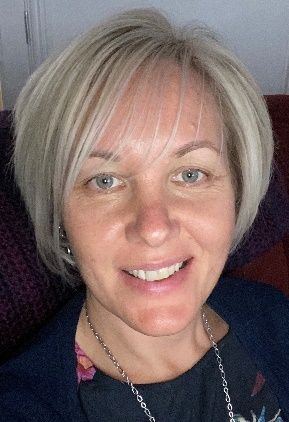 Hello our names are Dawn and Roz.
Hello our names are Dawn and Roz.
We’ll all have noticed that the NHS is undergoing digital transformation at pace. Covid-19 has also become a catalyst for speeding up digital transformation. Whilst for some people technology offers choice and even a lifeline, there are some groups who will be left behind as the NHS and social care sector goes online, if we do not tackle the combined issue of digital and health inequality and exclusion in a systematic and holistic way.
We know that, according to the Lloyds Consumer Digital Index:
- 9 million people are unable to use the internet or a device by themselves
- 3.6 million people (7%) are almost completely offline
- 1.9 million households do not have access to the internet
These people are more likely to be older, living with disabilities, living on low incomes and claiming benefits. Importantly, these groups of people are also more likely to need health and care support and services.Digital is integrated into almost every aspect of our lives, never more so than during lockdown. From buying online deliveries to ordering repeat prescriptions, keeping in touch with loved ones to paying our bills. In 2020 to be without skills, confidence and access to digital is to be left behind!
The NHS Constitution says the NHS should provide a comprehensive service available to all:
"...it has a wider social duty to promote equality through the services it provides and to pay particular attention to groups or sections of society where improvements in health and life expectancy are not keeping pace with the rest of the population."
Digital transformation of the NHS and social care sector and wider context without digital inclusion is compounding inequality both directly through creating a barrier to equal access to services and information and indirectly through the social determinants of health. Research and experience shows that there are three main domains which have an impact on digital exclusion:
- Real life factors: the social and wider determinants of health such as social capital, employment, education, level of income, housing etc. all have a significant impact on individuals and community capacity and access to go online and use digital technology.
- Digital life factors: digital skills, confidence and motivation all have an impact (LLoyds Consumer Index 2020)
- System factors: design, awareness and staff capacity and capability (Digital Inclusion for Health and Social Care) In 2019 we developed the Partnership’s Digital Strategy, highlighting the need to take a regional approach to digital inclusion. This was compounded with the development of the Yorkshire and Humber (Y&H) Health and Wellbeing Strategy, where it was agreed to approach this topic across the whole of Yorkshire and Humber.
Where are we now?
As part of the Covid-19 reset and stabilisation phase, we held a World Café session where each area across the Partnership (Bradford district and Craven; Calderdale, Harrogate, Kirklees, Leeds and Wakefield) shared their plans with programme leads. One of the key themes we identified was around digital inclusion. As this theme already sits within our Digital Strategy, the West Yorkshire and Harrogate Digital Board agreed to increase it in priority and has started some preliminary work.
The Yorkshire and Humber Digital Care Board, sitting across the three integrated care systems West Yorkshire and Harrogate, Humber Coast and Vale and South Yorkshire and Bassetlaw, have agreed to progress this work across Yorkshire and Harrogate. Our proposals include:
- Holding an initial workshop to explore digital exclusion, drivers and barriers for change and what inclusive digital transformation means. This will provide the opportunity to showcase existing local projects to inspire, draw out transferable learning and peer influence and support. There is so much good work taking place across the WYHP and it is vital that we learn from this experience
- Workshops with groups to source Inclusive Digital Transformation (IDT) champions (including people with lived and learnt experience) to understand the approach and develop a bespoke plan for each area
- Discovery workshops with the Partnership’s IDT champions
- Synthesis define and develop prototypes workshops with ICS IDT champions and other stakeholders from the area
- Evaluation and production of assets with creative commons licence (training webinar, case studies, templates, how to guide)
- Show and tell webinars designed to showcase and share the findings with a wider audience.
From those we will agree what work to promote and progress as well as establishing new innovations We held the first workshop within West Yorkshire and Harrogate on 28 September in partnership with mHabitat. Colleagues from across the region came together to hear about some of the great work already taking place with a view to learning and spreading good practice to make sure we can all benefit from digitally-enabled health and care.
There were a number of breakout sessions to showcase some of the great work on:
- Building digital skills
- The co-design process
- Financial support
- Increasing access to digital
- Overcoming data problems.
The workshop also provided opportunities for breakout sessions to discuss current priorities and areas to focus on in the future. Here are some of the key points:
- Start with understanding the current picture of need and the assets. A lot of work and thought has already gone into digital inclusion in some places. Local government is ahead of the game in some areas
- Work in partnership across the NHS, local government, industry, e.g. banking, telecom and housing and the voluntary sector
- Co-design with people (citizens, patients, staff) and don’t make assumptions
- Capture and share knowledge and information in a regional repository
- Enable access to devices, data and digital skills support (including for staff)
- Consider long term sustainability and investment
- System to ensure there is an understanding of the cost of data of tools
What’s next?
We’ll now carry out an exercise to determine a set of priorities which we can progress collectively. We’ll also run a series of co-design workshops with people who are more digitally excluded in these priority areas to find ways to ensure they benefit. We’ll be generating a set of replicable resources that we can share far and wide.
There is already existing and newly emerging work taking place across the region within individual organisations and also within West Yorkshire and Harrogate priority programmes such as Personalised Care. We want to get a better understanding of the drivers for these pieces of work and look at how there can be collaboration rather than duplication across the region.
There is no silver bullet or one route to solving these complex issues. However, we can look to improve the situation if we join forces and work together. Involving people who are currently more digitally excluded to help co-design and create the solutions is a vital part of this work. We’d love to hear from you so please get in touch if you’d like to be involved.
Thank you for reading,
Dawn and Roz
Celebrating Black History Month
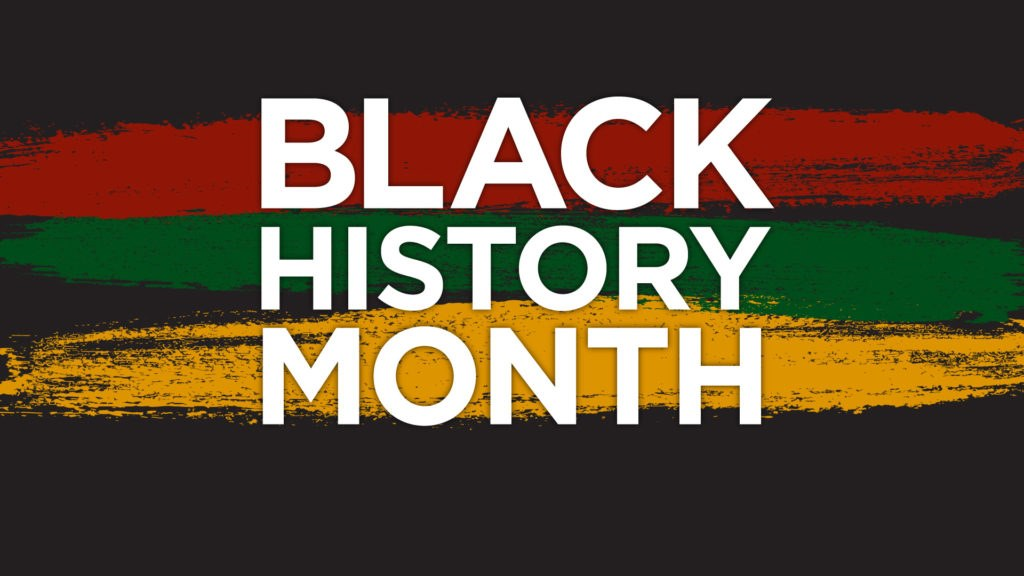 Our Partnership has continued to raise the profile of its diverse workforce during October for Black History Month. This week’s blogs come from; Dr Julie Duodu, Portfolio GP, NHS Leeds Clinical Commissioning Group, Trailblazer GP, member of Black Women in Health and co-founder of Afro Leads, Sharon Prince, Consultant Clinical Psychologist and Head of Psychology and Psychotherapy Services for Leeds and York Partnership NHS Foundation Trust and Nasar, Head of Marketing and Communications at a Community Interest organisation in West Yorkshire.
Our Partnership has continued to raise the profile of its diverse workforce during October for Black History Month. This week’s blogs come from; Dr Julie Duodu, Portfolio GP, NHS Leeds Clinical Commissioning Group, Trailblazer GP, member of Black Women in Health and co-founder of Afro Leads, Sharon Prince, Consultant Clinical Psychologist and Head of Psychology and Psychotherapy Services for Leeds and York Partnership NHS Foundation Trust and Nasar, Head of Marketing and Communications at a Community Interest organisation in West Yorkshire.
Black History Month: Why is it important?
Hello my name is Julie
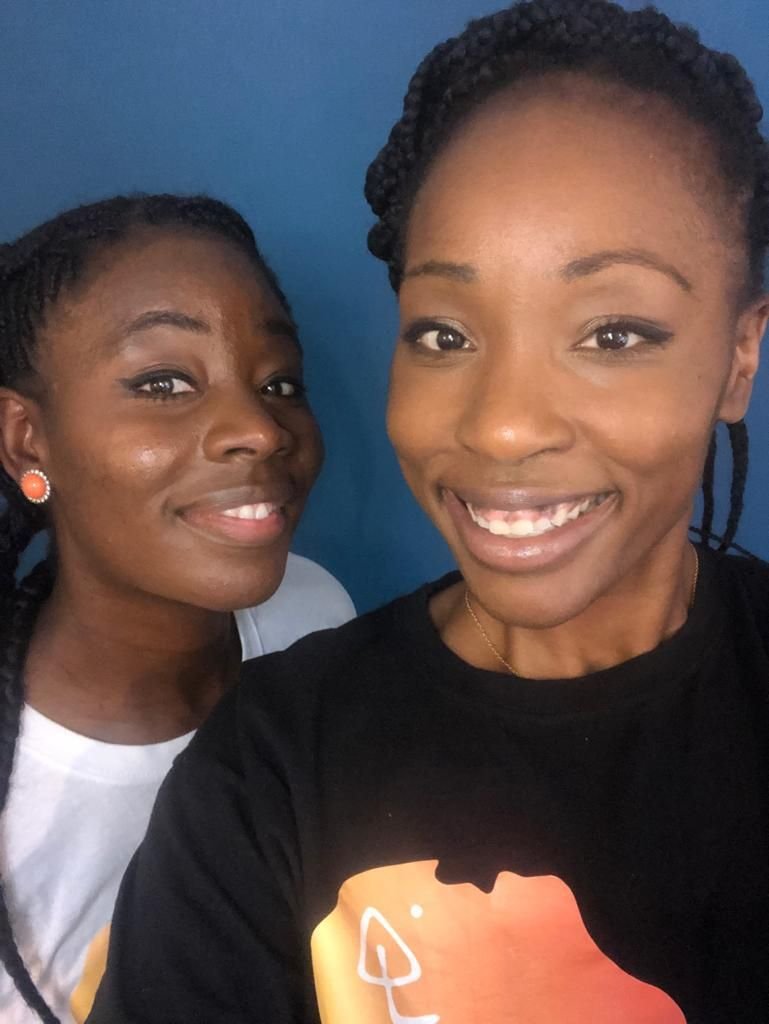 Mainstream history is often not comprehensive and that is why initiatives such as Black History Month are vital. It illuminates forgotten heroes or “whitewashed” events of our shared past. Raising awareness of these rich stories plants healthy seeds which can have a lasting impact both inside and outside of Black Culture. Black history is abundant and relevant all year!
Mainstream history is often not comprehensive and that is why initiatives such as Black History Month are vital. It illuminates forgotten heroes or “whitewashed” events of our shared past. Raising awareness of these rich stories plants healthy seeds which can have a lasting impact both inside and outside of Black Culture. Black history is abundant and relevant all year!
The UK Black History Month was started in 1987 by Mr Akyaaba Addai-Sebo, a Ghanaian political refugee. He was able, as part of his role as a special project coordinator for Greater London Council, to start this annual celebration of the achievements and contributions to World Civilisation of Africa, African people and the diaspora.
I am a first generation immigrant of Ghanaian parents and I grew up near Hull. My father was enticed to switch his studies from Medicine in Accra to Dentistry in Manchester in the 70s, to address a shortage of dentists at the time within the NHS. It is because of this decision my family are here. I proudly straddle two cultures- that of my heritage and my birth, and identify as a British Ghanaian.
Black British culture and business is something my sister and I promote daily on our Instagram page @afro_leads. It is through this endeavour that I have become aware of many of the following inspirational people:
- Mary Seacole (1805 -1881) – This magnificent woman of Jamaican and Scottish heritage self-funded her own passage in 1866 to be part of the war effort during the Crimean War and set up her “British Hotel” to care of wounded military personnel. Such was her care and compassion that she became known as “Mother Seacole”.
- Dr Harold Moody (1882 -1947) – A Jamaican physician whom immigrated to the UK to study medicine in 1904. Despite finishing top of his class in 1910, racial prejudices prevented his employment, so he set up his own practice in Peckham in London in 1913. He founded the “League of Coloured Peoples” in 1931 to fight racial injustice and obtain civil rights for all. This league was able to achieve amongst other things, the overturning of the discriminatory Special Restriction Order (or Coloured Seamen’s Act) of 1925. Many Black and Asian British Nationals whom had no proof of identity had been made redundant as a direct result of this act being in place (sounds familiar doesn’t it- history sadly does seem to repeat itself!).
- Daphne Steele – a nurse whom migrated from British Guyana in 1951. Despite racism both within the workplace from colleagues and from patients she worked her way up and became Britain’s first Black Matron in 1964 when she was appointed at St Winifred’s Hospital in Ilkley.
- Miss Samantha Tross – became Britain’s first Black female Orthopaedic Consultant Surgeon in 2005. She was born in Guyana. Oh to have been aware of her accomplishment as I was completing medical school- a powerful, shining example!
- Doctor Martin Griffiths – a Consultant Trauma Surgeon and the NHS’s first Clinical Director for Violence Reduction. He has been instrumental in setting up a scheme which provides support to patients injured via gang-related violence. This intervention has led to the number of people returning with further injuries to fall from 45% to less than 1% in six years- incredible!
- Dr Omon Imohi – multi-award winning GP, transformational speaker, life coach, founder of Black Women in Health, author and recently elected RCGP Council Member. An incredible force, truly elevating and is improving representation in Primary Care Leadership.
- Malone Mukwende – this now third year medical student at St George’s University, developed a guide I have been lamenting the lack of since I started my medical career in 2001. The difference between him and I? Malone has done something about it and produced a handbook which illustrates clinical signs of various conditions in black and brown skin! His efforts to “decolonise the curriculum” will benefit himself, other clinicians and most importantly patients.
- Dr Leanne Armitage – now a foundation doctor who started The Armitage Foundation as a medical student to practically and positively inspire young people from lower socioeconomic backgrounds and ethnic groups to study medicine. She was awarded the Queen’s Young Leader award in 2018.
- Dr Ola Brown - a British Nigerian and the founder and CEO of Flying Doctors Nigeria, West Africa’s first indigenous air ambulance service, which was established in 2007.
- Dame Elizabeth Anionwu DBE – Professor of Nursing and founder of the first sickle cell and thalassemia counselling centre in the UK.
- Professor Jacqueline Dunckley-Bent OBE - Head of Maternity at NHS England, also part of the maternity team which delivered Prince George and Princess Charlotte.
- Mrs Lynette Richards-Lorde - the UK’s first Black Director of Nursing. Knowledge of these heroes within healthcare makes my presence in it relevant; I can relate to them and am uplifted. I know I am also a part of this history. My being in my role will further “normalise” having Black doctors for people inside and outside of the culture. The more inclusive our profession becomes at ALL levels, the better represented and served our practice populations will be.
Happy Black History Month.
Have a safe weekend,
Julie
If you can see it, you can be it
Hello my name is Sharon
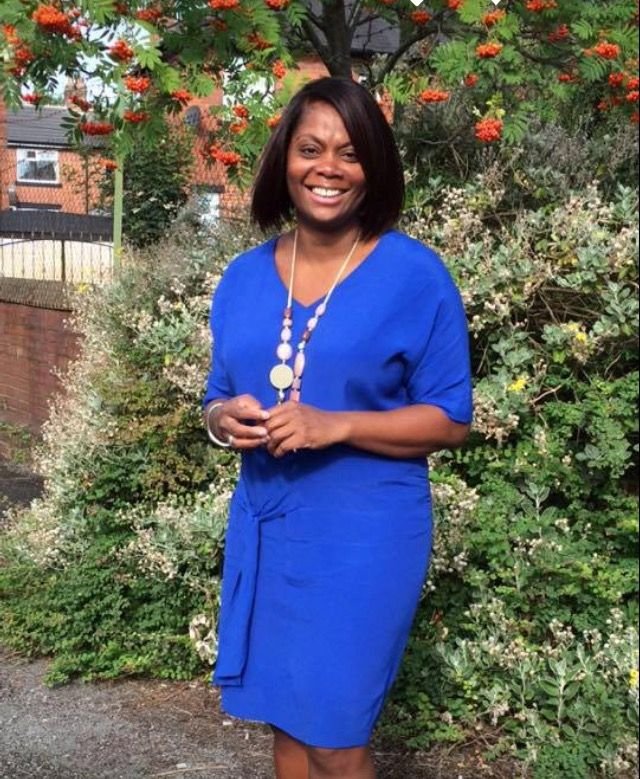 The first day of my second year placement in clinical psychology was eventful. I turned up excited about what lay ahead but anxious as I had never worked in this setting before. I had met my placement supervisor, white and female, the week before and now I was due to meet her at a group home to attend a team meeting. I arrived at the home and was shown to the meeting room. My supervisor arrived a few minutes later and sat at the other end of the room as it was a little busy and cramped. As the chair of the meeting, she said hello to everyone and then turned to me and asked, ‘Are you the new health care assistant’….?
The first day of my second year placement in clinical psychology was eventful. I turned up excited about what lay ahead but anxious as I had never worked in this setting before. I had met my placement supervisor, white and female, the week before and now I was due to meet her at a group home to attend a team meeting. I arrived at the home and was shown to the meeting room. My supervisor arrived a few minutes later and sat at the other end of the room as it was a little busy and cramped. As the chair of the meeting, she said hello to everyone and then turned to me and asked, ‘Are you the new health care assistant’….?
Fast forward many years later, I am now a Consultant Clinical Psychologist contributing to a meeting with senior figures working within mental health services. At the end of the session, I enter into a conversation with the white female chair, and she asks me by way of introduction whether I am the secretary of one of the invitees who sent their apologies….
I make no value judgement about being a health care assistant or secretary, my reflection is, why is it not assumed that I am the doctor, lawyer, psychologist, clinical director (insert any other profession here) within those contexts. Why is it that as a black woman it is often assumed that I am the person with the least amount of power in a room, usually filled with white people. These micro aggressions, as that is what I believe them to be, are a regular occurrence for people of colour. These are the everyday verbal, nonverbal and environmental slights, snubs or insults, whether intentional or unintentional, that communicates hostile, derogatory or negative attitudes towards stigmatized or culturally marginalised groups. We know that these behaviours along with systemic/institutional racism have a significant impact on wellbeing and life expectancy. We already know that this stuff kills us…and is one of the many issues which drive the Black Lives Matters movement.
Our children and members of our community need to know that they can inhabit any space they choose, but too often because of structures and processes over which we have very little control, they are prevented from achieving their potential. And in my mind, this is one of the many reasons why we celebrate Black History Month; to celebrate the contributions and achievements of black people and to make visible what is often unseen, denied or denigrated. My message for everyone and especially people of colour reading this blog, is not to internalise those messages about being ‘less’, and to use your personal and relational resources to survive and thrive.
Have a good weekend,
Sharon
What White people don’t see
Hello my name is Nasar
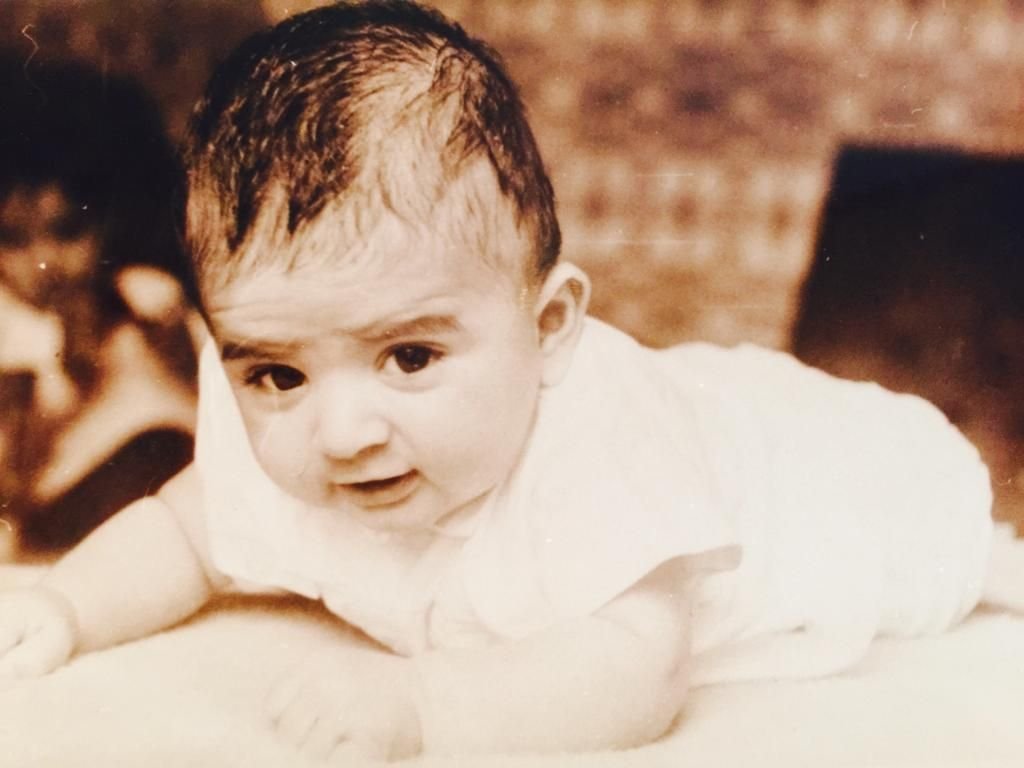 This year’s Black History Month (BHM) has, unfortunately, in its shadow another example of why campaigns like this exist.
This year’s Black History Month (BHM) has, unfortunately, in its shadow another example of why campaigns like this exist.
The first Black History Month took place at Kent State University, from 2nd January 1970 to 28th February 1970 (coinciding incidentally with when I was born!). The original aspiration for Black History Month was to remember important people and events in the history of African people; something that was all too often neglected by the wider community, and not taught in schools. Over the years, the month has expanded to include all Black people.
The killing of George Floyd in May 2020 is a grim reminder of the injustices that were inflicted upon Black communities and the many efforts, including Black History Month, that are being made to re-address the imbalance created through racist attitudes. Anyone who has ever experienced racism knows all too well the deep cruelty that is imposed from one person to another, from one people to another.
I was quite young when I first experienced racism. My earliest memory of this hatred – there’s no other way to describe it – was after school. I was only around 7 years old. I remember being afraid of ‘skinheads’ (as they were known at the time) and I had to walk past a group of them, on the short road home from school. Although they were white, they weren’t like my school classmates, who were also White. They were older than me, looked mean and I felt intimidated by the way they looked at me; full of disgust. I was scared. But I didn’t want to show it. I tried not to walk too quickly although I dearly wanted to run past them and leave the danger behind me. I quickened my pace a little, kept my head down, and carried on towards home, hoping they wouldn’t react to me. But they did. And no one else was around. As I passed, they sneered at me, called me, “Paki!” and laughed. They tried to goad me with their hurtful comments. My heart started to race and in my mind were pictures of myself being beaten by them. But with each step I took, the distance between these bullies and myself lengthened and my nerves started to settle. They didn’t come after me and once I had moved out of their reach and earshot, all I was left with was the thought that I had escaped from the wickedness they could have inflicted upon me.
I was only seven.
But the fear I felt from these taunts shook me. ‘Name calling’ may be seen as a ‘little thing’ but this didn’t feel small. There were no witnesses and I didn’t tell anyone what had happened. Not my family – I don’t know why. Perhaps because it was to be expected that we would be targeted, seeing as we weren’t White – a sad part of life maybe. I didn’t tell my friends at school either – they were all White but I didn’t judge them for what this small group of youths threw at me. I saw that the mean intent was only from these boys and at least I knew that not all White people were like that. It was confined to this small group and my classmates didn’t treat me in this way. These boys didn’t represent all White people and I didn’t see them as white, a colour – I just saw them as bad people. I don’t know why they hated me or looked down on me. I guess they saw that I wasn’t white and that was all they needed. They didn’t know me or want to know me. Had they had the slightest interest in me, they may have one day come to know that my aunt is White too. But I guess people who have this corrupt streak in them, can’t see far. Nevertheless, that experience has stayed with me from an early age but it hasn’t shaped my view of White people; it just woke me up to the realities of everyday life.
This was just one instance of racism that I had to go through. There are others. In my teenage years, it was clear that some racist traits extended from junior school to high school. Most of the school – pupils and teachers – was fine. Just a few that were ‘bad apples’. I tried my best to stay away from them. The high school I went to was a well-performing one with a good reputation. There weren’t many obvious signs of racism at play there. In the ‘80s, racism was starting to become more hidden. But it was still there. And that is the real danger. It was starting to go underground and seep out in ways that the general population cannot see. It’s not aimed at White people, so they are not going to witness it. But it does carry on. And it never stopped nor was it eradicated as a long-gone disease from society.
Open calls of racial slants are no longer how it happens. There is wide disapproval in society of those kinds of actions. So the perpetrators resort to more suggestive methods: the subtleties that are aimed at people from a non-White background, the stares, the reluctance from them to be anywhere near you, the minutiae of their behaviours; treating you last when you were in front of others; not being as helpful as they are to white customers, talking to you in a more harsh tone. When I walk into a shop, I may be presented with a look that immediately tells you that the white shopkeeper does not want you there. Those who have been at the sharp end of racism will recognise what I am saying. It’s not imagination – it’s the slightness that you become sensitive to after many such instances have crossed your path. This is what White people don’t see. Why would they? It’s not aimed at them.
Regardless of the underhand nature of racism, those who it’s targeted at know about it. I knew about it. The friends who I had, who weren’t White, knew about it. At school, Asians hung around Asians and Black people hung around Black people. But we both had something in common that bound us – both groups were subjected to racism in one way or another. Because of this, Black pupils and Asian pupils respected each other and would help one another. At school, when the need arose, both Black and Asian pupils were one.
I was born and bred in Yorkshire. I like fish and chips on a Friday. I like Yorkshire puddings. I can’t help saying “’Ow much??” And I talk like a northern lad (so the Londoners, who struggle to understand my accent, tell me). My parents and ancestry go back to Pakistan and beyond. In the house I grew up, I had Black neighbours and White neighbours – both were the most pleasant and friendly families. Good examples of upstanding members of the community. As I went through high school and eventually into college, facing the troubles the world would throw at a teenager, I was befriended by a family of Afro-Carribean descent, also born in the UK. They hold a place in my own personal history. They are people of good character and upbringing. They looked after me and made me smile. Gave me company when I felt alone. I learnt about them, about their parents (who lived in the Carribean) and their culture. I felt close to them and an affinity with them.
One day, I went with my good and trusted friend from that family to a pub. I don’t drink but that isn’t why we went there. We both liked to play pool and so we decided to go to one of the local pubs to have a few games. As soon as we opened the door and walked in, it was clear we weren’t welcome. If anyone has seen the classic horror movie, ‘An American Werewolf in London’, you will recall the scene where the two Americans walk into a local Yorkshire pub and everything stops. The music stops, the locals stop drinking and they all stare at the two strangers that just walked in. That’s how it was for us too (apart from the music carrying on). We weren’t wanted there – a Black lad and an Asian lad in a pub full of only white people. So, not to feel too embarrassed, we played one game of pool and then promptly left.
There are other acts of racism that I have encountered but what I have been through is nothing – I have got off lightly. What I have experienced is really very minimal compared to what others have had to suffer. But one thing is constant. Although I know there are many forms of racism in the world, the one ‘typical’ in the UK is ‘white against non-white’.
In my life so far, I have seen acts of racism aimed not only at myself but at others as well. I’ve seen this in the community and I’ve seen it in the working environment. I’ve seen it in the countryside and in cities. I have talked with other Black people and they all say the same – racism hasn’t disappeared and it’s not eradicated, as many White people may think; in fact, many White people may not even realise it is happening around them. It’s very much alive and you will see instances of it appearing… in football matches… aimed at mixed race couples… and in incidents that cause public outrage such as with George Floyd. When I saw the recordings of the police killing George Floyd aired for the world to see, I felt what many Black people felt. And I totally understand their anger at not just this incident but the whole state of affairs when it comes to racism. There still is institutional racism. There is still racism in certain quarters of our society. I feel aggrieved much the same as my Black neighbours and citizens. In some ways I will be considered Black (non-White), even though my line originates from Pakistan. But I have had close relations with Black people in my upbringing and am accepted amongst them, and we have all faced racism. I do know what this feels like – so many decades of campaigning and standing up against racism but it’s still very much there, it hasn’t gone away. Just look at the COVID-19 pandemic. On 29th October 2020, the West Yorkshire & Harrogate Care Partnership launched the findings of its BAME Review Report, which was conducted by an independent commission chaired by Professor Dame Donna Kinnair, Chief Executive and General Secretary of the Royal College of Nursing, a leading figure in national health and care policy. The introduction to the report states quite simply: “Covid-19 has highlighted health inequalities faced by Black, Asian and minority ethnic (BAME) communities and colleagues. The pandemic has also drawn attention to the impact of systemic racism on people’s lives.”
There’s been decades of talk and now talk feels cheap. It’s time for stronger measures than just raising awareness and feeling that we should educate people. People are already educated. Now don’t get me wrong. What I have written talks about the bad aspects of society and this should in no way taint the good nature of the vast majority of White people. I have seen amazing acts of kindness that I was not expecting; I’ve received good manners, a huge amount of respect, goodwill that would make you feel joy in your heart – good, upstanding White people who wish not the slightest harm against their fellow man or woman. And good White people who have stood up for me, which is what is sorely needed.
If only more White people saw what we (non-White) see.
Have a good weekend,
Nasar
What else has been happening this week?
West Yorkshire moves into Tier Three
A statement from the Leaders of West Yorkshire Councils (Thursday 29 October), with great reluctance, we have accepted that West Yorkshire will now move into Tier Three (Very High) restrictions as of 00.01am on Monday 2 November. You can read more here.
Housing for Health
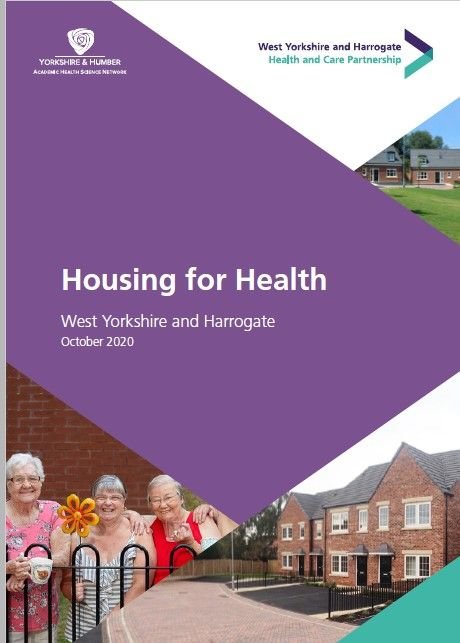 Our Partnership published its report Housing for Health last Friday. The report contains a collection of local case studies that provide evidence of how well-designed and person-centred housing support initiatives have a direct positive impact on people’s health and wellbeing. Housing is one of the significant determinants of health and wellbeing (Public Health England 2018). The adverse impacts on physical and mental wellbeing of living in an unhealthy home can be profound, particularly for children and their long term health. Together with the Yorkshire & Humber Academic Health Science Network, the report’s findings and recommendations were shared with 40 people representing key housing initiative. You can read more here. A series of follow up workshops have now been set up to take the work forward:
Our Partnership published its report Housing for Health last Friday. The report contains a collection of local case studies that provide evidence of how well-designed and person-centred housing support initiatives have a direct positive impact on people’s health and wellbeing. Housing is one of the significant determinants of health and wellbeing (Public Health England 2018). The adverse impacts on physical and mental wellbeing of living in an unhealthy home can be profound, particularly for children and their long term health. Together with the Yorkshire & Humber Academic Health Science Network, the report’s findings and recommendations were shared with 40 people representing key housing initiative. You can read more here. A series of follow up workshops have now been set up to take the work forward:
- Housing and mental health: 13 November 11am-12noon
- Housing, learning disabilities and/ or autism: 10 November 10am-11am
- Housing for older people: 16 November 11am-12noon
- Homeless and rough sleeping: 17 November 3pm-4pm. Please contact sroxby@wdh.co.uk if you would like to get involved.
Happy 50th year to Airedale NHS Foundation Trust
His Royal Highness The Prince of Wales kindly recorded a message for staff, in honour of our hospital’s 50th anniversary. Colleagues were delighted that His Royal Highness took the time to record this, and felt that his central message reflects not only on staff, but on the work of health and care staff across the district.
We are sending positive vibes
 A mini campaign has been brought together aimed at spreading a bit of positivity during the pandemic across West Yorkshire and Harrogate with a focus on what we can do to look after our wellbeing. The campaign has been developed with West Yorkshire Local Resilience Forum for partners across the area to use if helpful.
A mini campaign has been brought together aimed at spreading a bit of positivity during the pandemic across West Yorkshire and Harrogate with a focus on what we can do to look after our wellbeing. The campaign has been developed with West Yorkshire Local Resilience Forum for partners across the area to use if helpful.
West Yorkshire and Harrogate BAME Network
Members of the Partnership’s BAME Network include chairs of local partner networks. Network members have representation on a number of forums including the System Leadership Executive Group and are given the opportunity to comment on the papers. They are also in the process of appointing representation onto the Partnership’s People Board, Partnership programme boards and the clinical forum. The network has been supporting HR colleagues from across the system in ensuring that there is BAME representation on all senior recruitment processes and also supporting transforming the way in which we recruit and select our workforce. Colleagues continue to support the work taking place in Partnership organisations on risk assessments. The network supported the System Organisational Development and Leadership Programme to develop and implement the West Yorkshire Harrogate Health and Care Partnership BAME Fellowship. The network has also supported the development of bespoke training relating to Black Lives Matter and also White Privilege. Others work includes completing the first of many planned ‘leadership masterclasses’ and supporting the Health Inequalities Network in a number of areas including; maternity, cancer, diabetes and mental health.
Black Lives Matter workshop and pledges
We continue to raise the profile of the Partnership’s diverse workforce during Black History Month which runs throughout October. As part of this a Black Lives Matter workshop was hosted with our leaders on the 8th October. The objectives of the workshop were to educate and raise awareness, build change within our programmes and devise an action plan for change. Topics covered included unconscious bias and racial micro-aggression which helps employees learn how their individual behaviour is influenced by their own blind spots and stereotypes. White privilege, language for inclusion and creating an inclusive workplace.
Twenty-three programme directors and place leads took part in the conversation and the feedback shared by some of the attendees has been about how powerful the workshop was and they had gone away feeling ignorant but energised to do something about what they had learnt. Following the workshop we asked for attendees to share with us a personal pledge. This is because Allyship is not just a concept. It must be part of everything we do. We are pleased to share a short video featuring just a few of the pledges here. We are also pleased to announce that the Black Lives Matter workshop will be rolled out as a programme across the Partnership in the near future. The title of this may change as we will plan to add additional content that will cover the wider BAME racial inequalities, inclusion and anti-racism agenda. We will share further updates in November. For more information contact Samantha.kelly23@nhs.net Talent Management, System Development Lead.
Suicide reduction campaign (for staff)
The project group met last week. It is made up of colleagues from councils, the NHS, Healthwatch and the community voluntary sector, as well as people working in suicide prevention and those who have direct experience. The campaign plan and timelines are being developed. This builds on the insight from staff focus groups. The next steps including developing campaign materials which can be adapted to suit local organisation needs, identifying training courses and setting out the timescales. We will keep you updated.
Looking out for our neighbours
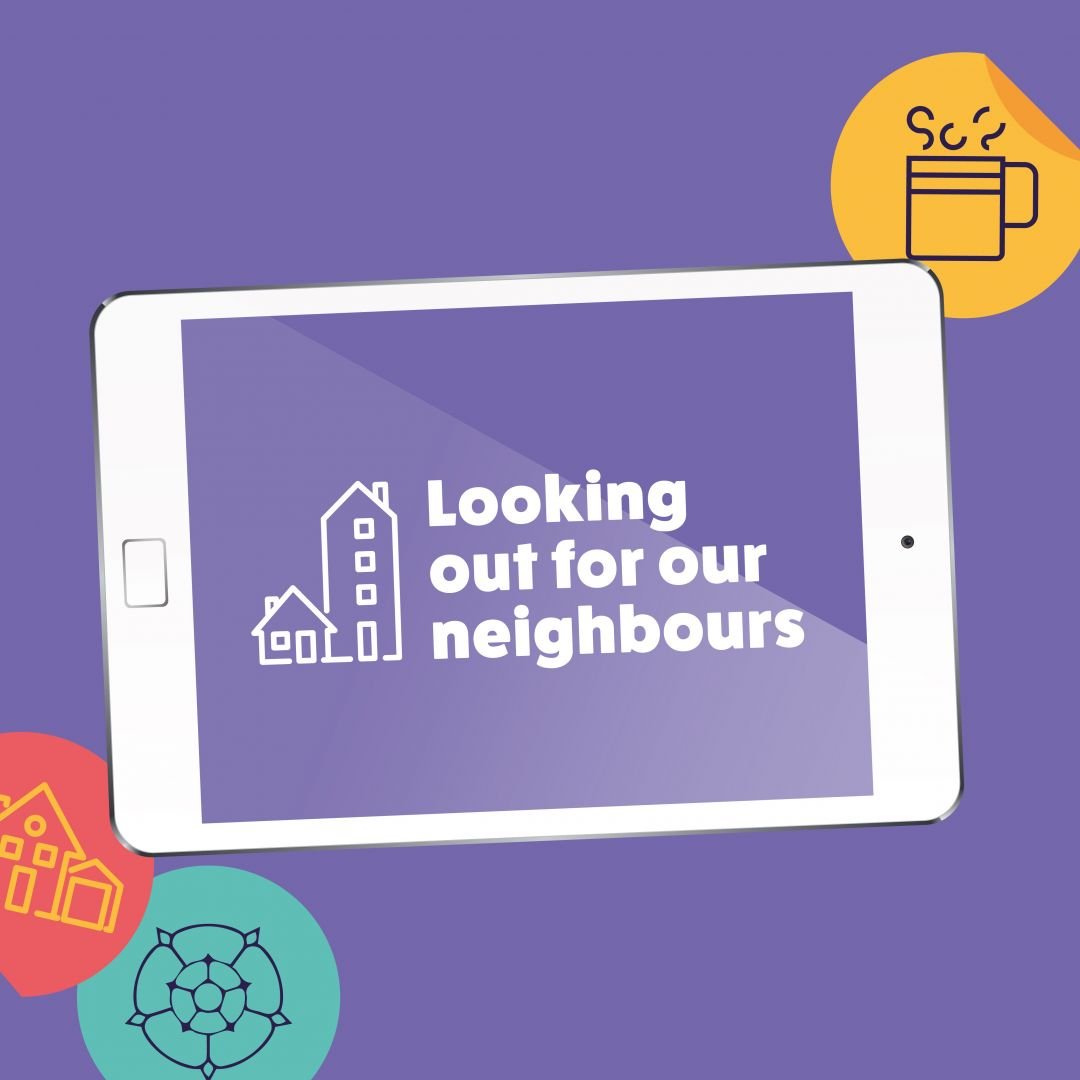 Thank you for all your support in the third phase of the ‘Looking out for our neighbours’ campaign. The recruitment for neighbour online reality stars closed on Thursday 22 October.
Thank you for all your support in the third phase of the ‘Looking out for our neighbours’ campaign. The recruitment for neighbour online reality stars closed on Thursday 22 October.
Twenty people are getting involved from diverse backgrounds and across our local places in their early 20s – late 60s in a series of online documentary style films, for this phase. The launch of the campaign will start from week beginning 16 November with new films coming out every two weeks until January.
Teaser messages for the campaign will be shared from late October and a set of resources for communication and engagement to use supported by some paid for social media promotion. Keeping in view covid-sensible - recorded content will also cover seasonal topics and hope and goodwill in general. All content will be hosted at ourneighbours.org.uk We will be linking to local help available via local place project leads to ensure it is current and reflective of the local climate. We are also looking at the potential to work with the Red Cross.
Government Coronavirus Community Support Fund money to tackle health inequalities
A leading local community partnership in West Yorkshire has pledged £650,000 of funding to support a number of charities across the region. The sum includes £90,000 from the Government’s Coronavirus Community Support Fund, which is being distributed by The National Lottery Community Fund. Our Harnessing the Power of Communities Programme, working with the voluntary, community, and social enterprise sector VCSE) are delighted to support local communities across Bradford district and Craven; Calderdale, Harrogate, Kirklees, Leeds and Wakefield. The funds will be channelled through local VCSE partners and will be used to support people who have been disproportionately affected by COVID-19. This is the latest tranche of funding which has been made available to the VCSE through WY&H HCP. It builds on more than £2.5million already invested in the valuable work delivered in local neighbourhoods in the past three years. You can read more about the VCSE funding in this news article.

